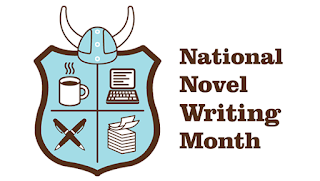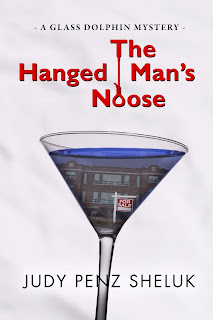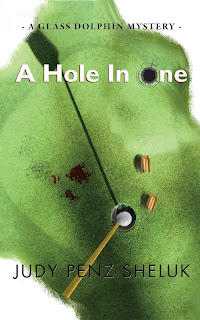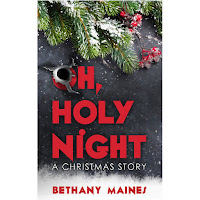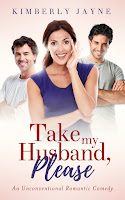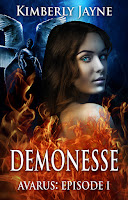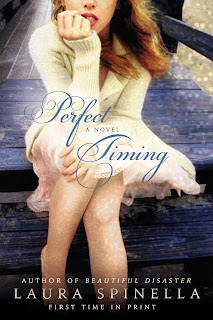Monday, the last day of November, will end National Novel Writing Month, also called NaNoWriMo, or for those beaten down by its grueling schedule who can no longer manage the extra syllables, just NaNo.
Every November for the last ten years, crazy writers worldwide have undertaken Chris Baty’s challenge to write a 50,000 word novel in one month. Novels in their completed form, like the one you’re probably reading this week, are usually between 70,000-90,000 words and, generally speaking, many authors produce a book each year. So while 50,000 words is short by industry standards for book-length fiction, it’s gargantuan in terms of what most writers can swing in thirty days.
In his own 50,000 word book No Plot? No Problem! Baty explains how this mammoth task can be tackled. The book is a riot and I found it totally uplifting and inspiring. Even if you think you’ll never participate in NaNoWriMo I’d highly recommend his entertaining book for people who want to shake up their writing routines.
To summarize: During the month of November, writers put down 50,000 words—no editing allowed. He stresses that there is a time for writing (November) and a time for editing (December and onward). When we write passages that will never make the cut, rather than delete them, we are to italicize them. This is how we’ll know what to take out later. But for November, all the words stay in the manuscript because the name of the game is output, not quality.
Between you and me, I italicized thousands of words this month.
Professional writers fall on both sides of the NaNo fence. Some say it’s better to write carefully and well, editing as you go, because there will be less work waiting during the revision phase. Others embrace the stream-of-consciousness approach and say that there’s a creative part and an editing part to the writing process, and that when we’re being creative we must suppress our inner critic.
At Bouchercon, I talked to writers from both camps and told them I was planning to do NaNoWriMo this year. Half of them told me to go for it. The others cautioned that it was the worst thing I could do. But my mind was already made up.
I’d known about NaNoWriMo for years but had never tried it because in previous Novembers I’d always been in the middle of a project. The idea behind the exercise is not to write 50,000 more words of a project you’ve already started, but rather to start from scratch. As it happened, this year I finished the first draft of one project in October, which left November ripe for the picking. I figured all I had to lose was one month, and my writing output being what it normally is (not much) this was a no-brainer. I had nothing to lose and a potential story thread to gain.
The reason I decided to do it is because I’m a chronic over-editor. If I don’t force myself to move on in a story, I will tweak and improve and play around with early chapters forever, at the expense of not producing anything new. This doesn’t make the revision process faster, either, as those Bouchercon writers suggested it would. In the last book I wrote, for example, I massaged the early chapters until I thought they were absolutely perfect. Then my cherished critique partner convinced me to start the novel in Chapter Four. (He was right.) So where’s the economy in that?
No, the reason NaNoWriMo appealed to me is that I had a vague, general idea about what I wanted to write about in my next book. I wanted to write a mystery based on a love affair and I wanted to set it at a hockey rink. Being a mystery, someone would die, but I didn’t know who, or why, or how. This is not the sort of ambiguity upon which my editor looks favorably.
The first step of starting a new book is sending her a synopsis. In a synopsis, we basically tell the whole story to our editors in a couple of pages, including the twists, misdirections, and ending—none of which I had—and this way we can find out ahead of time if something major should be changed before we spend the next year wandering off into the weeds. So my reason for jumping into NaNo was to figure out what was going to happen in the book. I didn’t actually plan to use any passages I produced because I believed Chris Baty when he said, “Make no mistake: You will be writing a lot of crap.” (I’m here to tell you he was right.) Rather, for me, NaNo would be a success if I came away with enough material to kluge a synopsis.
Enter real life. A few weeks ago, a colleague remarked that he thinks I organize my thoughts by writing. We were talking about the scientific papers we co-author, but his observation struck me as applicable for my fiction too. I decided that if I was lucky, I’d come out of NaNo with a 50,000 word outline, basically. I was willing to throw away all those words if my thoughts about the next book would finally be organized. Or even closer to organized.
But what about setting realistic goals? I work. Have kids. I’m training for a couple races. And there was my addiction to Facebook to consider.
I also had a lot of weekend commitments that took me out of town in November. So I modified my NaNo goal to 30,000 words. Before NaNo, a successful writing month for me produced 10,000 words of much higher quality so I thought that aiming for 30,000 words of drivel might be a fair compromise.
Finally, let’s not underestimate the convenience of letting our standards slide as things get tough. I draw upon my marathoning experience for illustrative purposes:
Before the race: “I’m gonna set a personal record!”
At Mile 10: “I feel so good. I’m invincible!”
Mile 19: “Guess I went out a little fast. If I finish as least as good as last year, that’ll be fine.”
Mile 22: “Why am I here? I hate running and all my friends are at the movies. I want their Junior Mints.”
Mile 24: “I’ll finish when I finish. Hell with it.”
Mile 26.2: “I missed my goal, but I’ve finished something most people will never start.”
That’s kind of how this month went for me. The New England Crime Bake conference over the weekend of November 13th and 14th set me back. When I came home, there was so much to catch up on, including kids’ activities and sports, and Thanksgiving events at their schools (that took up my lunch hours, during which I had been writing NaNo stuff before). Long story short, the words just weren’t coming as fast as they had earlier in the month. I decided to give myself a break on the word count and focus on just writing something every day, which is another thing I don’t usually do.
So how did I do? When this posts, I’ll have three days left, so I’m not done putting words down for this experiment. But at the time of this writing (Tuesday) I’ve penned 25,300 words on 95 pages, have a structure for the story, an interesting new character, and an idea about a motive. Whodunit details remain sketchy, and I won’t be using any of the words I actually put down. But over the holidays I hope to produce that synopsis.
I missed eight writing days in November. Ready for the excuses?
1. One day I was out of town for the Ft. Worth Mud Run.
2. The next day I just didn’t feel like doing anything. Happens.
3. One weekend I was at Crime Bake—too busy talking about writing to actually do any.
4. One day I got home from work and went straight to my daughters’ basketball practices, after which I came home and collapsed.
5. Another day I chose the gym over the keyboard. That was a sanity call.
6. This week I decided, rather abruptly, to paint my dining room. That took out another couple days.
Observations: Some days I wrote a couple thousand words, others I wrote a couple hundred. I wrote more longhand in November than I ever have before, scribbling words in a spiral notebook I carried around in my purse. I discovered that longhand works for me, and I’ll keep that notebook handy for long waits and unexpected downtime. I also learned that I can walk to a picnic bench near my lab and eat lunch outside while I write. I’ve never mixed business (day job) and pleasure (writing) in the same hours before, so this was a neat discovery, like stealing an extra writing hour out of the day.
By my admittedly low and sliding standards, NaNoWriMo was a success. My writing habits are more flexible than I once thought. I’d never written 4,000 words in one sitting and this month I did it twice. Before NaNo, I was unwilling to write flat dialogue or low-stakes scenes, so when I got stuck I left the keyboard, perhaps not to return for days. But by giving myself permission to explore a story in a rambling, blindfolded fashion, with no expectation of quality, I explored more possibilities. Several of them stuck and will stay in Book 3. Who knew?
Based on the last month, I’d say that if you are a disciplined writer who routinely turns out a word count with which you are satisfied, this is probably not something you need to explore. If you are that writer, then you already have a method that’s working for you. But if you’re like me, paralyzed to move ahead in your story unless you know what is supposed to happen next, then NaNo is a good exercise in pushing forward through the uncomfortable parts of a storyline. Recently I was one of several guests on a Blog Talk Radio show called What’s Write for Me. We talked about our experiences with NaNoWriMo and what it meant to each of us. If you’re thinking about NaNo or just curious how it went for other writers, click over and have a listen.
With luck, I’ll be between projects again next November because I’d really like to give this another go.
Parting words:
“The greater danger for most of us lies not in setting our aim too high and falling short; but in setting our aim too low, and achieving our mark.”
— Leonardo da Vinci
Rachel Brady

